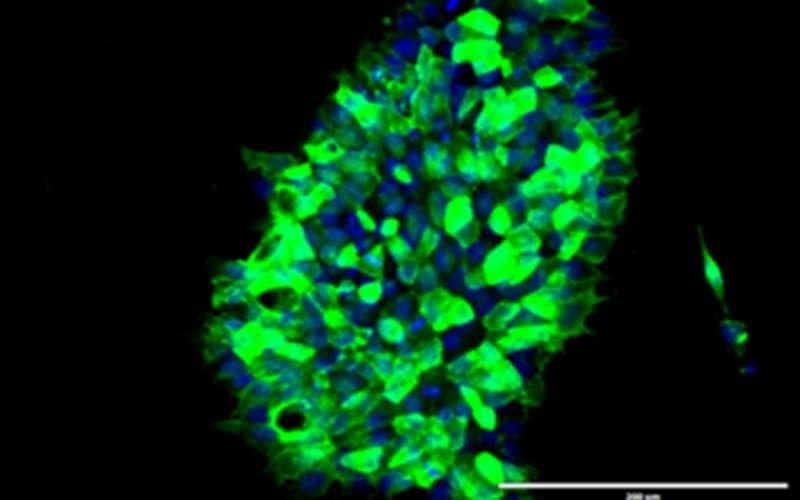Corrected stem cells. Credit: Sami Jalil
Researchers in the University of Helsinki and University Hospital Helsinki have developed a method to precisely and rapidly correct genetic alterations in cultured patient cells.
The method produces genetically corrected autologous pluripotent stem cells from a 2–3 mm skin biopsy from patients with different genetic diseases. The corrected stem cells are essential in the research and for the development of new therapies for the diseases in question.
The scientists based the new method on previous groundbreaking research in the fields of stem cells and gene editing, including two Nobel-prize awarded techniques. The first technique is the invention of induced pluripotent stem cells, iPSCs from differentiated cells, which won the Nobel in 2012. The other technique is the CRISPR-Cas9 "gene scissors" innovation, which got the prize in 2020. The new method combines these techniques to correct gene alterations that cause inherited diseases and at the same time creates fully functional new stem cells.
New therapeutic possibilities to inherited diseases
The long-term goal of the researchers is to produce autologous cells with therapeutic properties. The use of the patient's own corrected cells could help in avoiding the immunological challenges hampering the organ and tissue transplantation from a donor. The new method was developed by an Argentinian Ph.D. student Sami Jalil in the Biomedicum Helsinki Stem Cell Center and it is published in the recent Stem Cell Reports, the journal of the International Society of Stem Cell Research.
There are more than 6000 known inherited diseases, which are caused by different gene alterations. Some of them are currently treated with a cell or organ transplant from a healthy donor, if available.
"Our new system is much faster and more precise than the older methods in correcting the DNA errors, and the speed makes it easier and diminishes also the risk of unwanted changes," says adjunct professor Kirmo Wartiovaara, who has supervised the work.
"In perfect conditions, we have reached up to 100 percent efficacy, although one has to remember that the correction of cultured cells is still far away from proven therapeutic applications. But it is a very positive start" Wartiovaara adds.
More information: Sami Jalil et al, Simultaneous high-efficiency base editing and reprogramming of patient fibroblasts, Stem Cell Reports (2021). DOI: 10.1016/j.stemcr.2021.10.017
Journal information: Stem Cell Reports
Provided by University of Helsinki
























